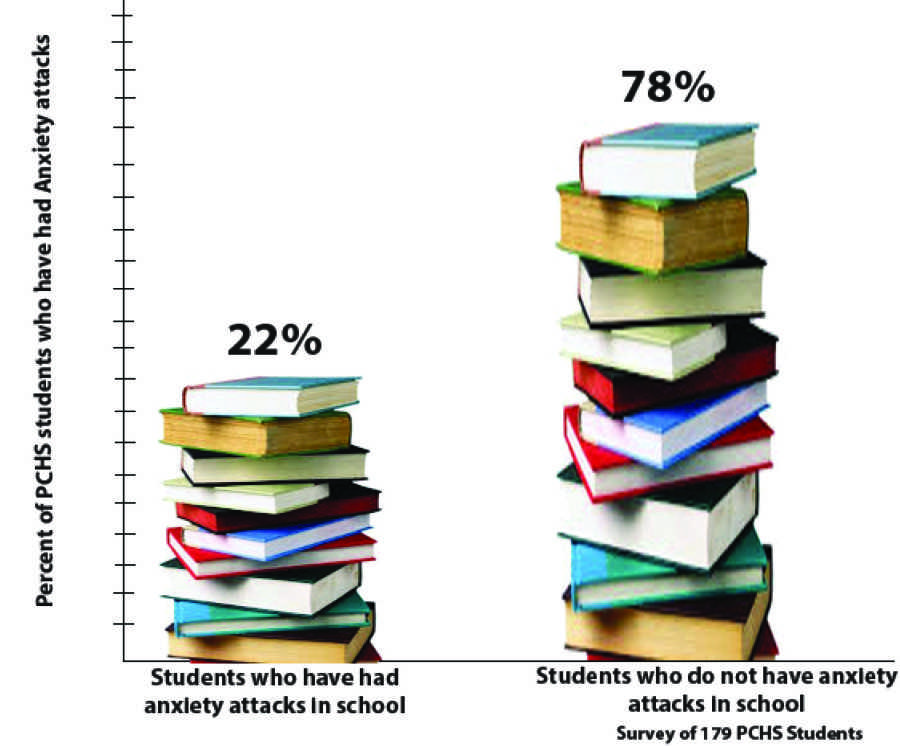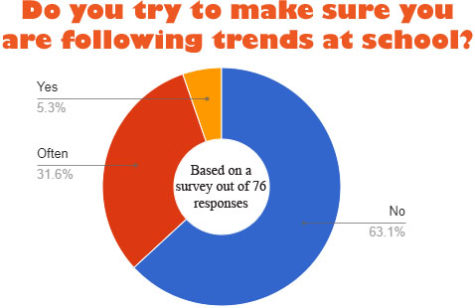Anxiety strikes at school
Handling attacks well makes difference
December 3, 2015
Imagine sitting in class. Your heart speeds up and you begin to sweat. Whatever lecture your teacher is saying immediately leaves your mind. Either a thousand things run through your mind or you are at a complete blank. You are having a panic attack.
It’s scary and you may not know what to do. It could be new to you, or it could be something you have to deal with frequently. You don’t want to tell your teacher because they might not know what to do. You are afraid, and feel alone.
In a recent Fielder survey of 179 students, 22.34% percent of students have experienced panic attacks in class. Of those students who had an attack, 75% of them said the teacher did not notice.
“I tried to calm myself down and not show there was a problem. If attention was drawn it would make it worse. After between thirty minutes and an hour, I felt better,” senior Onnie Jonas said.
“I feel like some teachers notice quickly, and I feel that it’s a good thing,” freshman Heidi Lopez said.
While in class, students may experience a higher level of anxiety and find themselves falling into a panic attack. It can become a scary situation not only for the students but also for their peers and teachers. Other students may not fully comprehend what is happening and cause more trouble for the student who is in near-hysteria. Luckily many teachers really do know how to handle the situation when a student is having a panic attack.
“Some students I would bend down to be eye level, some I would pull them out of the classroom and just talk to them, others just need to take a breath and have a drink of water,” Judy Link, geometry teacher said.
Although some teachers are willing to help, they do not have to feel obligated to be the person to calm the students down.
“If a student has anxiety in class, definitely send them down to student services to speak with a counselor or a social worker,” Matt Kantor, counselor, said. “Do not send them down alone. You can either send a student with them or if you feel comfortable walking them down and leaving the class alone that’s fine, but definitely don’t leave them unattended.”
There are many different things a teacher can look for so that they can tell if an anxiety attack is going to occur.
“There are physical signs, like they’ll have a panicked look on their face or they can be sweaty or fidgety. There can also be commutative signs like talking really fast, or not responding at all, and they are just unengaged,” Aaron Lawler, art teacher said.
While suffering through a panic attack, the student may or may not be able to communicate, and that can cause even more confusion during the already chaotic event. It is suggested by tourettessyndrome.net that if a teacher knows ahead of time a student may be prone to panic attack, they should meet with the student and decide how it should be handled if an attack occurs. The teacher could offer a pass to them that they can use when they need to leave the classroom and calm down. Together the teacher and student can create a ‘safe spot’ for the student as a place for them to go when they do need to leave the classroom.
According to Alanna Frederiksen, choir director, when a student is having an anxiety attack it is clear that they are in need of attention, but it can be difficult for a teacher to give it to them while they are responsible for an entire class of students.
“I’d like to be able to sit down with the student and be there through and while they are recovering from the anxiety attack, but sometimes that’s not possible,” Frederiksen said.
Depending on the severity of the attack, it can have debilitating effects on the student. Some students may avoid school because their anxiety heightens even further due to worry about having an attack in school according to tourettessyndrome.net. Students could worry about the reaction from their teachers or peers, so it is important that they feel safe while in the classroom.








